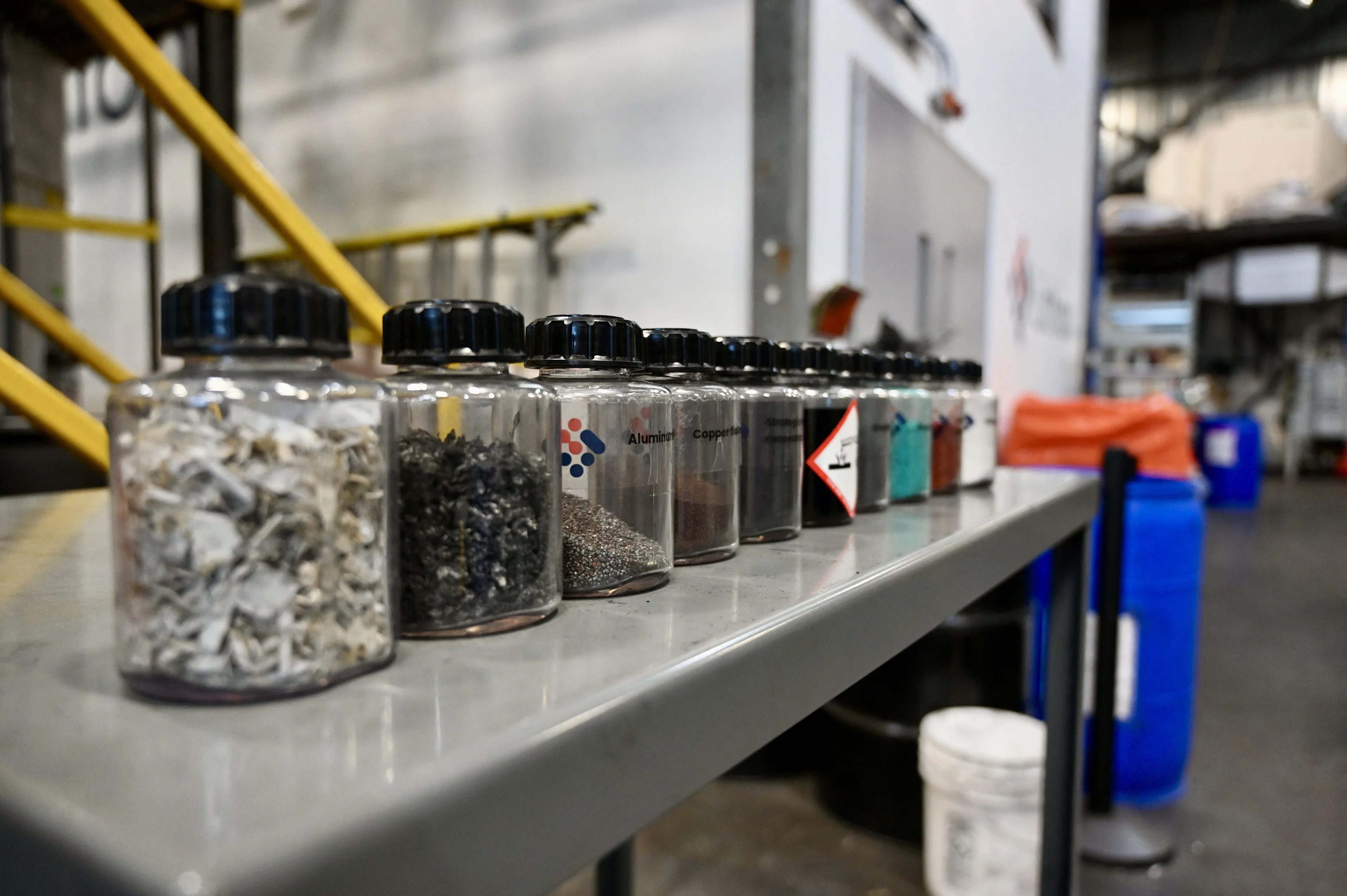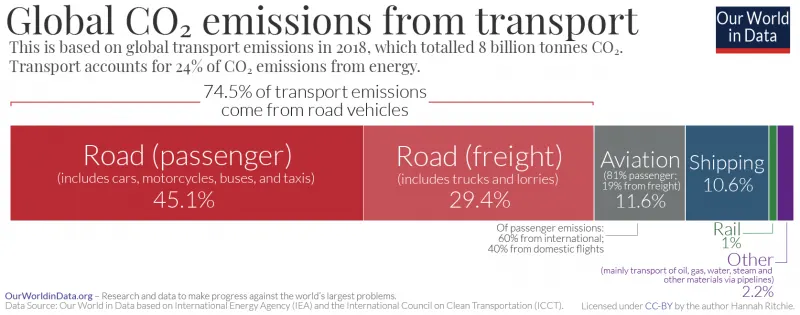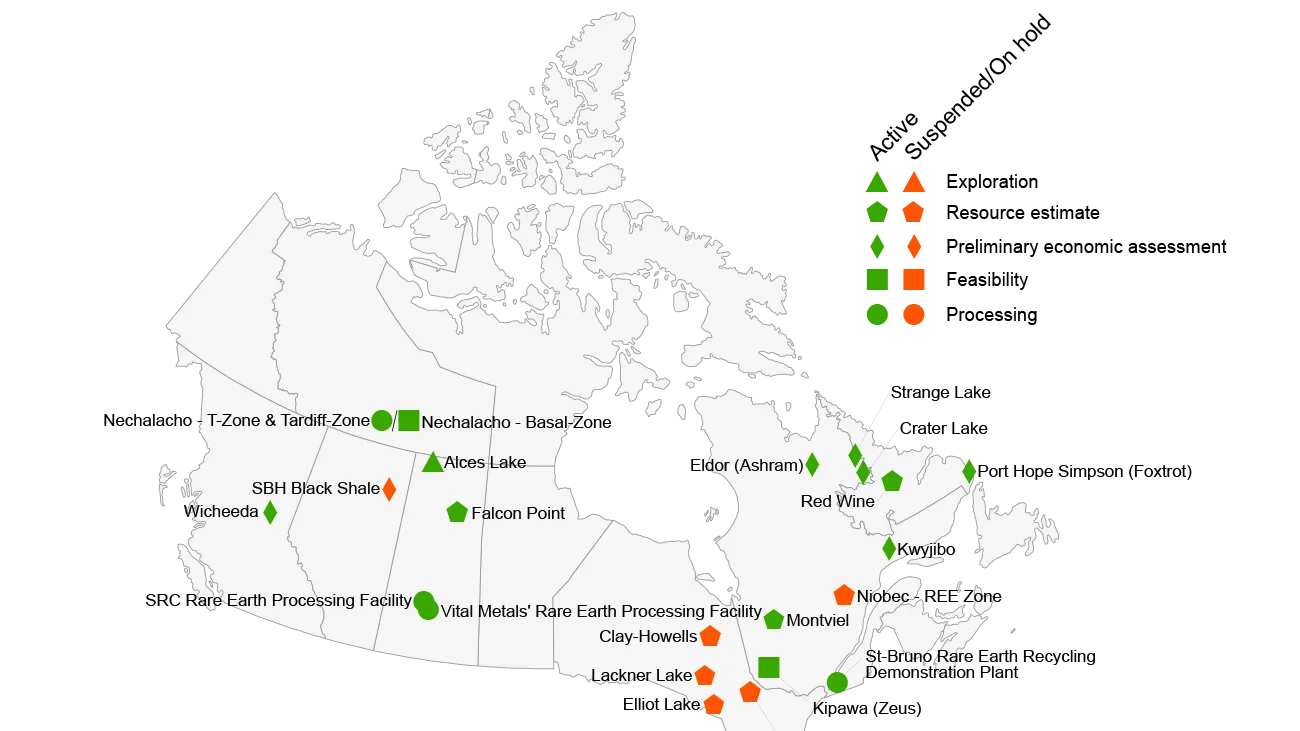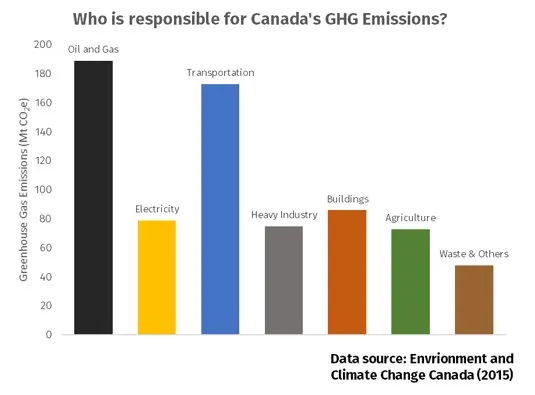
Why a circular economy is necessary for a green transition
To combat the growing threat of human-caused climate change, Canada has committed to reduce its greenhouse gas emissions by up to 45 per cent below 2005 levels by 2030. As the largest emitters of greenhouse gases per capita in the world (according to some studies), this is a monumental task.
In late 2022, the Liberal government published draft regulations requiring all new passenger vehicles and light trucks sold in Canada after 2035 be electric zero-emission vehicles. According to experts, 24 per cent of carbon dioxide emissions come from the transportation sector. In Canada, its estimated cars and trucks alone constitute around 11 per cent of the nation's total carbon emissions, which is in line with global figures.
The policy is also an attempt to bring an electric vehicle (EV) production industry to Canada. Once famous for its automotive industry, Canada has dropped in its production levels. Based on The Economists’ numbers, Canada dropped from making 14 per cent of North America’s cars in 2014 to only eight per cent today.

(Source: Our World in Data)
Part of the reason Canada wants to become a leader in EV production is because of the massive store of natural resources available in the nation. The government has developed a strategy to develop a domestic supply chain for mining the resources integral to the green transition. The goal is to supercharge its EV manufacturing by opening mines around minerals like lithium, graphite, nickel, cobalt, copper, and rare earth elements. These minerals would not only go to Canada’s domestic supply chain, but become new exports.
Canada and its allies such as the U.S., EU, and Japan have signed agreements around co-developing resources including rare earth elements to compete with China, which currently controls over 80 per cent of the rare earths market. By developing critical and rare earth minerals, Canada engages not only its climate change and economic priorities, but also geopolitical aims.
But propelling the green transition will not be that easy. While rare earth elements and critical minerals hold a key to tackling emissions, how they are handled could very well lead Canada down the same path that kicked off the climate crisis. Experts suggest this is an opportunity for Canada to shift from an extraction economy mentality to something called a circular economy, where all aspects of the production cycle are taken into consideration before wrecking any more ecosystems.
Canada’s extraction industry
According to the International Energy Agency (IEA), “a concerted effort to reach the goals of the Paris Agreement … would mean a quadrupling of mineral requirements for clean energy technologies by 2040. And to hit net-zero globally by 2050 would require six times more mineral inputs in 2040 than today."
In order to meet these goals, Canada will need to increase production at places like the Ring of Fire to fuel the production of EVs, wind turbines, and solar panels.
The Ring of Fire is a vast mineral-rich region located in the remote James Bay lowlands of Northern Ontario. The region spans approximately 5,000 square kilometres and is rich in chromite, nickel, copper, and rare and critical minerals. The development of mines in this region, and more across Canada (see picture below), have angered environmentalists who see large-scale mining as having significant ecological consequences and impacts on nearby communities.

Development of mines across Canada. (Source: Natural Resources Canada)
There is little information on exactly how much mining pollutes, and which resources use most of Canada’s energy generation, but based on Stats Canada reporting about half of Canada’s energy production goes to industrial use which includes mining, refining and manufacturing.
Not only is extracting minerals for the green transition difficult, but the process of separating and refining rare earth elements from ores is even more complex than for gold or copper and has a significant environmental impact. It generates large amounts of wastewater, produces radioactive waste products, and consumes large quantities of energy and water. Yet these very polluting materials are necessary for the green transition.
To forward the government's economic, ecological, and geopolitical goals using a strictly extraction-based approach would require something like an extra four rings of fire, which experts say is something the environment cannot afford. But by implementing a circular approach, Canada wouldn’t need to extract the same way it has for the past 200 years.

Who is responsible for Canada's GHG emissions. (Source: ECCC 2015)
The circular fix
Circularity, or a circular economy, aims to eliminate waste, regenerate natural systems, and ultimately create a more sustainable future for both the planet and ourselves. Unlike the linear system we are accustomed to, where materials are extracted, consumed, and then disposed of in landfills, circular economics focuses on creating a closed-loop system where resources are continuously recycled and reused.
Waste is turned into valuable resources through innovative techniques like recycling, remanufacturing, and refurbishing. Products would be designed with durability and recallability in mind, ensuring their longevity within the circular economy.
This shift towards circular economics has the power to not only minimize environmental impact but also create new job opportunities and stimulate economic growth. Cost and environmental savings can be found all over the process, reducing the need for new materials.
According to Jessica Richtner of Nature Electronics, “it has been estimated that recycling end-of-life electric vehicle batteries could provide 60 percent of cobalt, 53 per cent of lithium, 57 per cent of manganese and 53 per cent of nickel needed globally in 2040.”
READ MORE: How will we charge all these new electric vehicles?
Initial research by Richtner and others proves electric vehicles can be produced sustainably through a circular process much like smaller electronic products are now. The primary supply of resources has been relieved by recycling in other industries. Fairphone, a Dutch telecoms manufacturer, is one of the leading companies in circular technology. Their latest release, The Fairphone 4, is touted as 75 per cent recyclable. As an electronic product, albeit much smaller than a car, its method of recycling could be replicated in theory. Fairphone’s insistence of recyclability and reparability are two key aspects of circularity ethos that would need to be included in to a circular EV supply chain.
Recycling procedures are well-established for bulk metals, but not for many energy transition elements, like lithium and rare earth elements. The emergence of waste from renewable energy sources like batteries and wind turbines could play a role in circulating materials from wasted products to new ones. It is estimated that by 2040, recycled amounts of copper, lithium, nickel, and cobalt from used batteries could reduce the combined primary supply requirements for these minerals by about 10 per cent.
Recycling would not eliminate the need for ongoing investment in new supplies to meet climate goals, but help alleviate the need for new materials.
WATCH BELOW: Canada’s first type-certified e-plane takes its inaugural flight
Cyclic Materials, a Kingston-based rare earth recycler, helps businesses access rare earths taken from old products. Over the past few years, Kingston has become a major home of recyclers due to its connections to universities, government and the resources industry. Their business model is to work with manufacturers towards fully 100 percent recycling of rare earths.
As a recycler, the company works with other businesses within the EV supply chain. One example is their work with Arnold Technologies, a rare earth magnet maker. Power dense and lightweight rare earths magnets have electric motor applications that make them a hot commodity. The partnership between the two companies affects several rare earth and critical minerals, these include: samarium, neodymium, and dysprosium, along with cobalt. According to Arnold Technologies, once the partnership is shared amongst its other North American locations, both Canada and the U.S. will have a supply chain of primary materials divorced from the violence in the Democratic Republic of Congo, and the market dominance of China.
As both a high-income nation and natural resources exporter Canada produces loads of waste that can be brought back into the circular economy. With education, industry and mindset, Canadian-based companies are already taking the circular economy seriously as a necessary approach in the transition, and a great revenue-making venture.
Thumbnail image: Samples of rare minerals obtained by recycling used batteries are seen at Lithion's plant in Montreal, Quebec, on January 17, 2023. - As the world races to transition to emissions-free driving, Canada is making a big push into batteries for electric vehicles -- touting tax incentives, as well as bountiful cricital minerals and clean energy to attract multinationals. (Photo by Mathiew LEISER / AFP) (Photo by MATHIEW LEISER/AFP via Getty Images)











